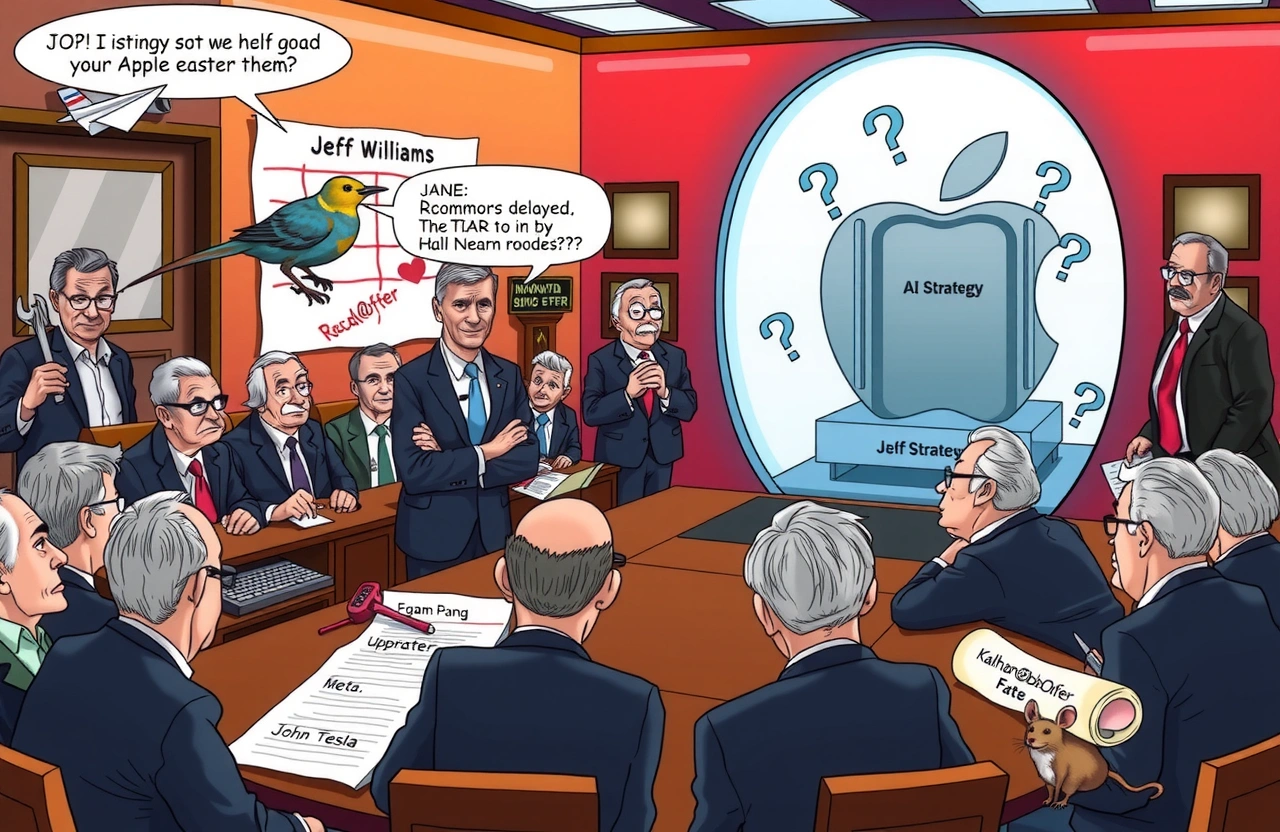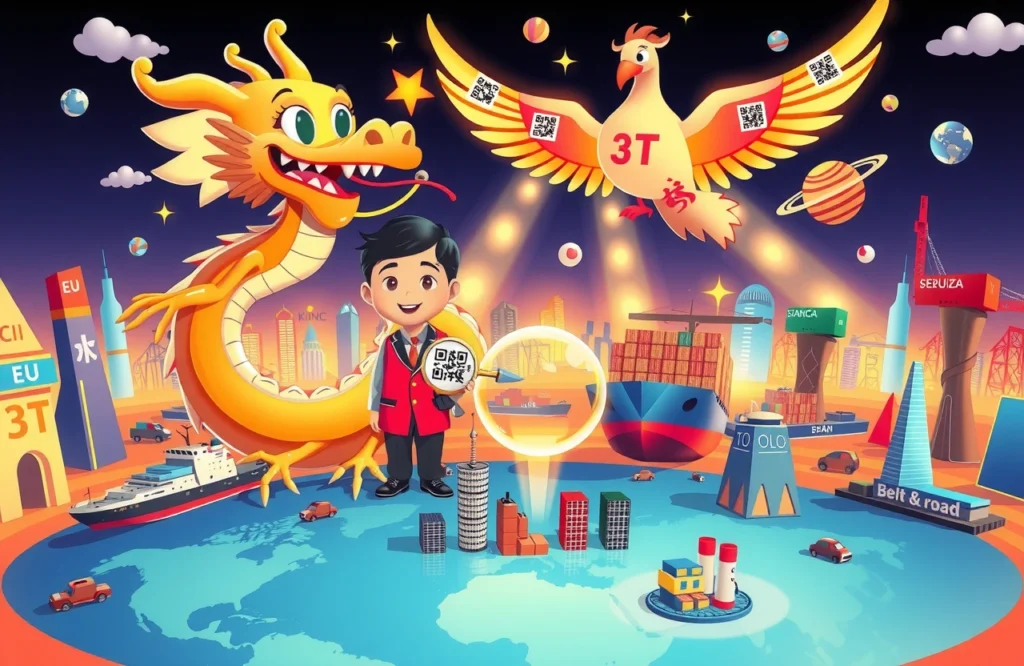The sudden departure of Apple Chief Operating Officer Jeff Williams (杰夫·威廉姆斯) has ignited urgent questions about leadership continuity at the world’s most valuable company. CEO Tim Cook (蒂姆·库克) shows no immediate signs of relinquishing control, yet this retirement exposes a precarious scenario: no definitive heir apparent remains within Apple’s executive ranks. This vacuum, combined with a rapidly aging leadership team and recent blows to their artificial intelligence ambitions, forces the tech giant toward its most significant organizational overhaul since Steve Jobs’ era. The unfolding succession crisis challenges Apple’s strategic future precisely when competitors accelerate in the AI race. Bloomberg reports reveal internal anxieties that without decisive restructuring, Apple risks following Nokia’s downward trajectory in technological relevance.
Key Immediate Takeaways:
– COO Jeff Williams’ (杰夫·威廉姆斯) retirement removes Tim Cook’s (蒂姆·库克) most experienced potential successor
– Hardware chief John Ternus (约翰·特纳斯) emerges as long-term CEO candidate despite operational experience gaps
– Half of Cook’s direct reports are now over 60, forcing imminent generational transition
– Strategic blow: AI chief Ruoming Pang (庞若鸣) defected to Meta for $20M+ package despite retention offers
– Emergency plans propose interim “collective governance” by finance chief Kevan Parekh (凯文·帕雷克) and retail head Deirdre O’Brien (迪尔德丽·奥布莱恩)
The Mounting Succession Crisis
Jeff Williams’ (杰夫·威廉姆斯) scheduled retirement represents more than a single executive departure – it removes the executive widely considered Tim Cook’s (蒂姆·库克) natural successor. For years, Williams operated as Cook’s operational twin, managing Apple’s global supply chains and new product development with equal proficiency. His exit forces attention onto Apple’s conspicuous succession planning void. While Cook appears positioned to extend his tenure indefinitely – potentially transitioning to board chairman like Disney’s Bob Iger (鲍勃·艾格) – the leadership pipeline beneath him lacks depth. This succession crisis grows increasingly critical as multiple senior executives near traditional retirement age without clear replacements.
Cook’s Extended Reign and the Power Vacuum
Insiders confirm Cook plans no near-term departure, having consolidated authority through multifunctional oversight of operations, services, and design. His retention creates dual challenges: essential decisions increasingly require Cook’s personal approval, and ambitious talents hesitate to commit without visible advancement paths. This bottleneck intensifies the Apple succession crisis, potentially stifling innovation just as competitors like Microsoft and Google gain AI momentum. Should Cook face unexpected departure, Apple lacks a designated temporary leader – exposing the company to chaotic power struggles during market instability or tech disruptions.
The Underqualified Heir Apparent
Current speculation centers on hardware engineering VP John Ternus (约翰·特纳斯) emerging as CEO within 3-5 years. His 20-year Apple tenure and popular leadership style lend credibility. However, Ternus lacks financial oversight experience and global operational scale-management – significant gaps versus Cook and Williams’ blended expertise. Within technical ranks, Ternus commands respect for shipping key products like iPhone 12 and M1 MacBooks. Still, Apple board members privately express concerns about his unfamiliarity with investor relations and supply chain crisis management should he inherit leadership during economic turbulence. The absence of executives with Cook’s operational mastery heightens anxieties around Apple’s dangerous succession planning gap.
The Graying Executive Bench
Demographics contribute powerfully to Apple’s escalating succession challenges. Analysis of Cook’s direct reports reveals nearly half exceed age 60 – a cohort including marketing chief Greg Joswiak, services leader Eddy Cue (艾迪·库), and hardware technologies VP Johny Srouji. When combined with Williams’ departure, this accelerates forecasts for executive turnover. Institutional investors increasingly raise governance concerns during earnings calls, noting that Apple now fields tech’s oldest leadership among trillion-dollar companies despite positioning itself at youth culture’s forefront. This generational mismatch threatens perception and performance potential.
Restructuring Plans and Emergencies
Plans for scaled transformation evolve in closed-door strategy sessions. Scenario planning includes wholesale executive committee recomposition by late-2025, potentially elevating younger operational leaders like hardware VP Kate Bergeron and services VP Peter Stern. Current contingency scenarios outline an interim leadership council combining CFO Kevan Parekh’s (凯文·帕雷克) financial oversight, retail chief Deirdre O’Brien’s (迪尔德丽·奥布莱恩) customer ecosystem knowledge, and Srouji’s silicon expertise. However, sources describe this fragmented regime as potentially volatile – historically resulting in slower innovation cycles, as occurred under Microsoft’s post-Ballmer transitional leadership period.
AI Talent Defections: A Systemic Concern
The high-profile departure of AI architecture chief Ruoming Pang (庞若鸣) to Meta underscores cultural friction compounding Apple’s succession crisis. Internal investigations concluded Pang’s exit stemmed not merely from Meta’s $20 million-plus compensation package, but structural constraints preventing technical experimentation: Apple demanded multilayer approval for architecture changes that hindered adapting foundational models. This follows key research departures to Google DeepMind and Amazon. Such losses sabotage Cook’s strategic vision for conversational AI leadership through upgrades to Siri Intelligence – the technology intended to anchor Apple’s next platform shift.
Strategic Shifts to Regain Footing
Apple confronts its succession planning deficiencies through aggressive acquisition strategies targeting early-stage AI innovators. Corporate development officers established active dialogues with leaders of companies like Microsoft-backed Mistral AI and conversational search pioneer Perplexity AI – the latter representing potential Apple’s largest-ever acquisition. This pursuit of external innovation reflects internal acknowledgments that core engineering teams suffer talent attrition and inability to prototype radical concepts under current leadership methodologies. Acquiring startups provides selective pathways to bypass institutional slog while allowing the company to reshuffle AI personnel and infrastructure.
Corporate Development’s Aggressive Posture
Discussions signal willingness to exceed Apple’s historical acquisition price ceiling – the $3 billion Beats purchase in 2014. Targeting generative AI startups directly addresses erosion in core assistant capabilities while providing fresh leadership talent beyond struggling internal pipelines. These deals could create parallel innovation structures insulated from Apple’s rigid development hierarchies. Mergers specialist Dylan Patel has suggested such moves follow Meta’s acquisitions success strategy that revived its AI capabilities after senior researcher departures. Integrating acquired personnel while retaining their agency presents complex management challenges that existing leaders seem ill-prepared to handle.
The Growing Innovation Deficit
Services lead Eddy Cue’s (艾迪·库) reported comments about Apple “risking Nokia’s trajectory” highlight organizational self-awareness. Leadership paralysis around greenlighting truly transformative products manifests publicly in delayed features and derivative devices. Experimentation budgets concentrate on near-term upgrades like M-series chip iterations instead of challenging emerging interfaces. With core executives averaging 14 years’ tenure, institutional bias favors predictable roadmaps over disruptive bets. This innovation-deficit feedback loop intensifies the succession crisis: leaders hesitant to stake careers on breakthroughs consolidate around incrementalism, thereby diminishing profiles needed for promotion.
Product Pipeline: Evolution Without Revolution
Tim Cook’s (蒂姆·库克) management strengths shine through iterative refinement, not revolutionary leaps. Apple’s upcoming releases underscore this constrained innovation capacity. Fall schedules confirm iPhone 16 proceeding on axis with marginal camera and AI processing enhancements. Simultaneously, M5 chip-based iPad Pros and modest Apple Watch upgrades progress toward release. Strategic products showing meaningful novelty face development obstacles: the Home Manager concept codenamed J490 relies on Siri functionalities behind schedule by 18 months, forcing market entry projections to late-2026. Without surprise disruptions, Apple’s planning reveals the next five hardware cycles prioritize optimization over redefinition.
The Vision Pro Gambit
Market response to Apple Vision Pro peaked at enthusiast excitement, with sustained adoption constrained by weight, pricing, and app support gaps. Mixed reality remains Apple’s boldest modern product bet, positioned to anchor future computing paradigms. Yet strategic shifts disadvantage this flagship: despite attaching John Ternus (约翰·特纳斯) to oversee spatial growth, leadership attention increasingly focuses on defending core iPhone ecosystem integration against generative AI challengers. Sustainability requires capital investments potentially conflicting with profitability thresholds established under Tim Cook’s (蒂姆·库克) management philosophy.
Revenue Concentration Risks
iPhone reliance grows dangerously with services attached: smartphones contributes 52% of Apple’s revenues, supporting other divisions like ambitious spending on autonomous car technology before its cancellation. The strategy lacks new category expansion comparable to Watch in 2014 or AirPods in 2016. With software innovation suffering amid the AI succession instability, Apple risks further functional commoditization during platform shifts pioneered by rivals – the classic disruption pattern that marginalized former giants like BlackBerry. Leadership freshness in product strategy ranks becomes business-critical.
Navigating the Road Ahead
Apple stands at a historic inflection – its enviable brand loyalty overcoming transition shocks more effectively than most corporations could manage – but the compounding succession crisis demands cultural revisions. Analysts suggest secretary general roles established during Sony’s periods of leadership thinning could provide inspiration through clearer mandate separations between operations oversight and strategic innovation. As Cook approached the twilight career phase, stewardship principles must align board oversight processes with shareholder expectations regarding succession clarity. Without structured handover horizons, executive departures will provoke increasing volatility.
Institutional Transformation Requirements
Experts advise implementing Toyota-style “shadow cabinet” programs identifying candidates early for rotational assignments. Tech board specialists recommend appointing dedicated vice chairs to mentor Ternus on regulatory affairs and investor stewardship. Internal feedback suggests substantially increasing talent development connectivity – introducing technical executives to operational leadership experiences systematically rather than appointing functional stars to general management with basic orientation. Prevent future succession crises by formalizing accelerated growth pathways for diverse internal talent. True restructuring requires governance changes actively redistributing decision rights beyond Apple’s traditionally tight-top influence circle.
Today’s events mean Apple cannot avoid confronting structural leadership questions suppressed for years while posting record profits. Competitive gaps in artificial intelligence demonstrate deep talent strategy failures, product pipeline predictability reflects risk aversion, and demographic realities dictate unavoidable generational transition. Companies surviving similar inflection points embraced transparency about their evolution – IBM launching distinct cohorts within executive ranks via accountable change initiatives. Apple requires boldness matching its historic innovations to navigate generational renewal. Technology strategists urgently must reassess Apple investment theories accounting for leadership instability risks once casually discounted as improbable. Shareholders deserve clear timelines showing succession resolution before Cook’s dominance becomes a long-term liability stealing attention from needed reinvention.




